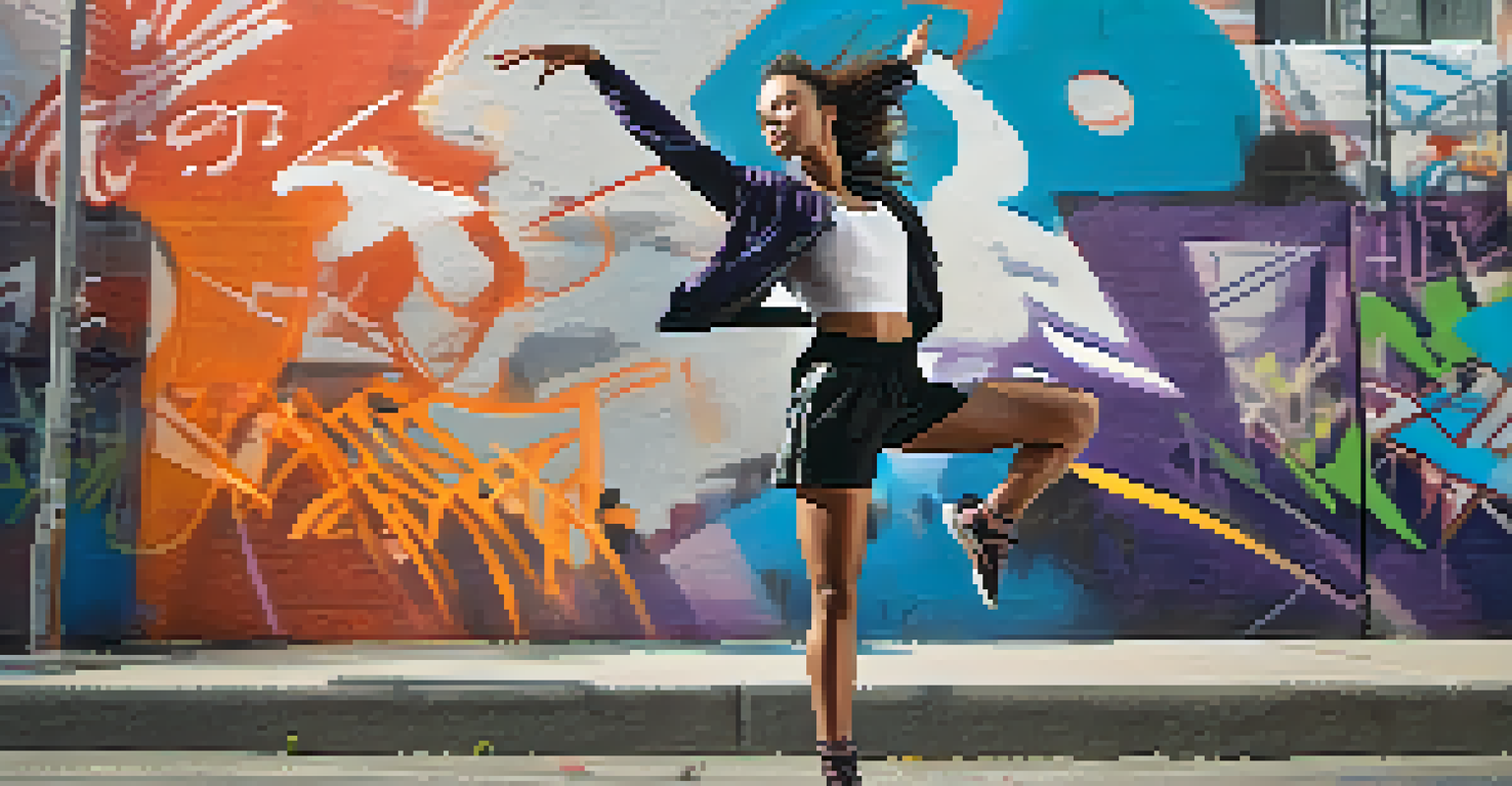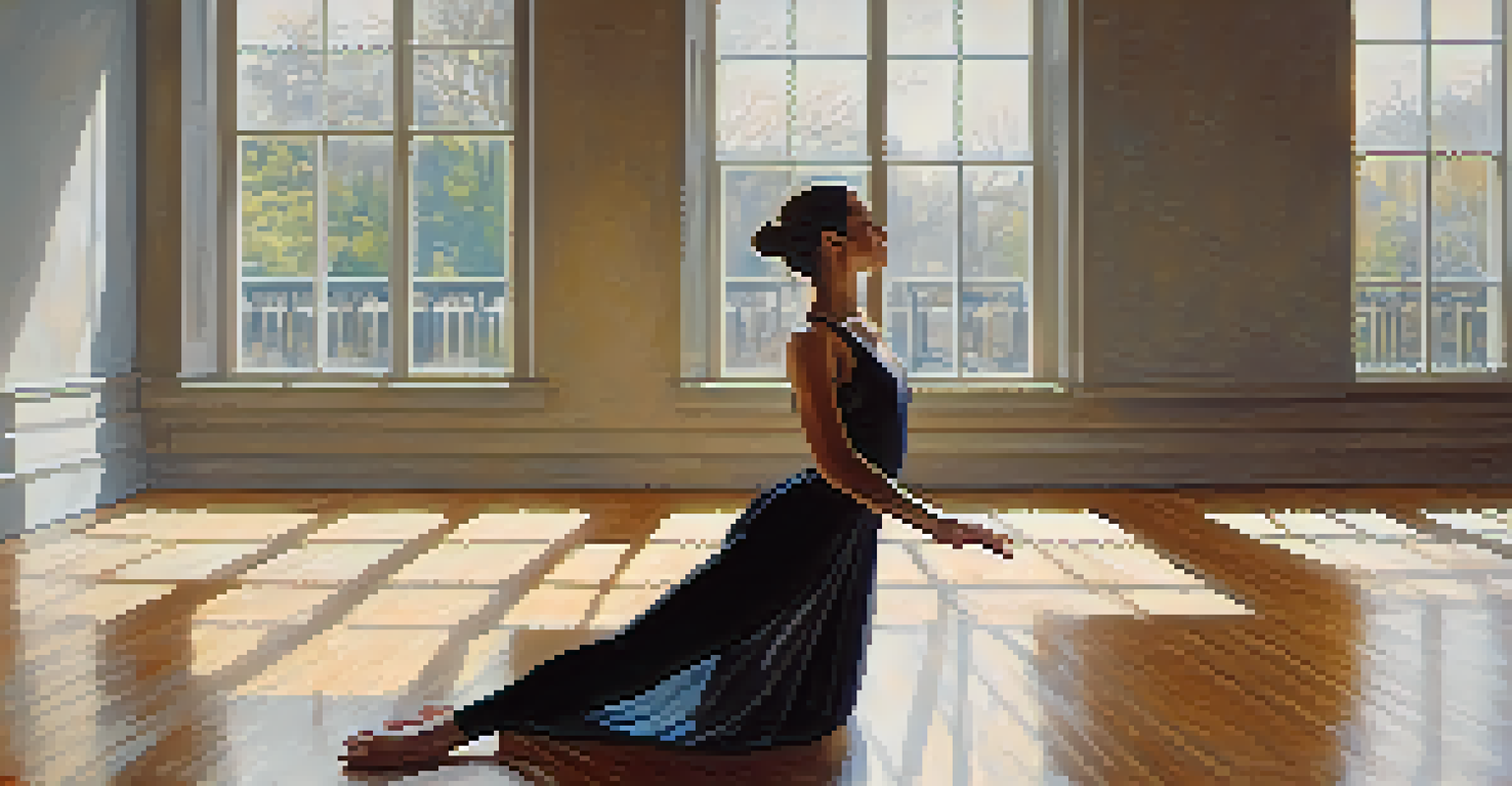Dance Photography: Capturing Movement in Visual Arts

Understanding Dance Photography and Its Unique Challenges
Dance photography is a captivating niche that focuses on capturing the grace and athleticism of dancers. Unlike other forms of photography, it requires an understanding of movement and timing, making it both challenging and rewarding. The goal is to freeze a fleeting moment that showcases the beauty of dance, often during live performances or rehearsals.
Photography is the story I fail to put into words.
One of the unique challenges in this field is dealing with low light conditions, especially during performances. Dancers move quickly, and you have to anticipate their movements to capture the perfect shot. Using a fast shutter speed is crucial, but it can also lead to darker images if not balanced with the right ISO settings.
Moreover, understanding the choreography is vital. Familiarity with the dance piece can help you identify key moments that are visually striking. This insight allows you to position yourself strategically to get the best angles, ensuring you don’t miss those breathtaking leaps and turns.
Essential Gear for Capturing Dance in Motion
Having the right equipment can make a significant difference in dance photography. A DSLR or mirrorless camera with a fast lens is often recommended. Lenses with wide apertures, like f/1.8 or f/2.8, allow for better performance in low-light environments, helping to capture sharp images with beautiful background blur.

In addition to a good camera, using a tripod can stabilize your shots, particularly in dimly lit venues. However, many photographers prefer to shoot handheld for flexibility, allowing them to move with the dancers and capture spontaneous moments. Image stabilization features can also help smooth out any slight shakes.
Dance Photography Requires Skill
Capturing the beauty of dance involves understanding movement, timing, and the unique challenges posed by lighting conditions.
Lastly, don't forget about accessories like external flashes or reflectors. While natural light is ideal, it may not always be available. Using a flash can help illuminate the dancers without being too intrusive, but it's essential to use it carefully to avoid disrupting the performance.
Techniques for Freezing Motion and Enhancing Expression
To truly capture the essence of dance, understanding techniques for freezing motion is essential. A fast shutter speed, typically between 1/500 to 1/1000 of a second, helps to stop the action in its tracks. By doing so, you can showcase the intricate details of a dancer's form and expression, making the photograph come alive.
Dance is the hidden language of the soul.
However, sometimes capturing motion blur can also create stunning visuals. This technique can convey the feeling of movement and energy, allowing you to showcase the dynamism of the dance. You can achieve this by using a slower shutter speed while panning your camera along with the dancer's movements.
Balancing both techniques can add depth to your photography portfolio. A series of images, some frozen in time and others with motion blur, tells a more comprehensive story about the performance, illustrating both the precision and fluidity of dance.
The Importance of Composition in Dance Photography
Composition plays a vital role in dance photography, as it can enhance the storytelling aspect of the images. Utilizing the rule of thirds can help create a balanced photograph, drawing the viewer's eye to the dancer while also including the surrounding environment. This technique encourages engagement and draws attention to the dancer's movements.
Additionally, experimenting with angles and perspectives can lead to more dynamic compositions. Shooting from above, below, or at unique angles can emphasize the dancer's form and the choreography's intricacies. This approach not only captures the movement but also adds an artistic flair to your images.
Essential Gear Makes a Difference
Using a high-quality camera, fast lenses, and stabilization techniques can significantly enhance the ability to capture dance in motion.
Lastly, negative space can be a powerful tool in dance photography. Leaving ample space around the dancer can evoke feelings of isolation or freedom, depending on the context. This technique can help convey the emotion of the performance, making your photographs even more impactful.
Post-Processing: Enhancing Your Dance Images
Post-processing is an essential step in refining your dance photographs. Software like Adobe Lightroom or Photoshop can help enhance colors, contrast, and sharpness, making your images pop. Basic adjustments like exposure and white balance can also significantly improve the overall quality of your shots.
You can also experiment with cropping to achieve a more compelling composition. Sometimes, removing distractions from the edges can bring more focus to the dancer and their movements. However, be cautious not to over-edit, as maintaining the authenticity of the performance is crucial.
Additionally, consider using presets or filters that complement the mood of the dance. A soft, dreamy look might suit a ballet performance, while a more vibrant approach could enhance a contemporary piece. Remember, the goal is to enhance the emotion and energy captured in your photographs.
Building a Portfolio that Showcases Dance Photography
Creating a strong portfolio is essential for any photographer, and dance photography is no exception. Your portfolio should reflect your unique style and expertise in capturing movement. Include a variety of shots that showcase different dance styles, performances, and techniques to demonstrate your versatility.
When selecting images for your portfolio, focus on quality over quantity. Choose the shots that resonate with you and highlight your best work, as this will make a more significant impact on potential clients or collaborators. A well-curated portfolio tells a story and gives viewers a sense of your artistic vision.
Post-Processing Enhances Images
Refining dance photographs through editing tools can elevate the visual impact and convey the emotional essence of the performance.
Additionally, consider featuring behind-the-scenes images or candid shots of dancers. These moments can provide context and show your ability to capture the art of dance beyond the stage. This approach not only enriches your portfolio but also allows viewers to connect with the dancers on a more personal level.
Networking and Collaborating in the Dance Community
Networking within the dance community can lead to incredible opportunities for photographers. Attend performances, workshops, and dance festivals to meet dancers, choreographers, and other creatives. Building relationships in this vibrant community can open doors for collaborations and future projects.
Social media platforms are also valuable tools for connecting with dancers and showcasing your work. Sharing your dance photography on platforms like Instagram can help you reach a broader audience and attract potential clients. Engaging with the dance community online fosters connections and can lead to exciting opportunities.

Lastly, consider collaborating with dancers for personal projects. This not only allows you to experiment with new techniques but also builds your portfolio. Working together can create unique and artistic interpretations of dance, benefiting both the photographer and the dancer.